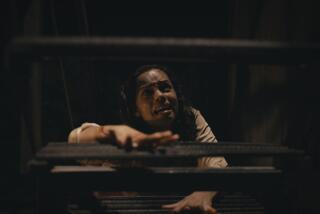GO FIGURE : Greed Doesn’t Cut It Anymore?!?
- Share via
Call it “Bonfires of the Vanities” syndrome, call it ‘90s sentimentality, but stories about greed in the ‘80s appear to be losing some of their luster in Hollywood.
Case in point: Columbia Pictures planned to make a movie of “Barbarians at the Gate,” the best-selling account of the buyout of RJR/Nabisco by Kohlberg Kravis Roberts & Co. But studio chief Frank Price recently decided to pass on the project, even though it was being produced by his longtime associate Ray Stark and featured a witty script by Larry Gelbart, who wrote the Tony-winning musical “City of Angels.”
Price declines comment on “Barbarians.” But sources close to it say the studio chief was concerned that there were no characters to root for in the script. Columbia even toyed with the idea of making F. Ross Johnson--the deposed chief executive of RJR who started the ugly episode--more heroic. (The absence of positive characters was one of the problems in attracting
directors for “Bonfires of the Vanities,” which Brian De Palma ultimately turned into a black comedy that bombed at the box office.)
When Columbia cooled on “Barbarians,” Stark took the project to HBO Pictures, where a spokesman said the company “is very excited about it.” If the project--now in development--goes forward on cable, the likely director would be Brian Gibson, who just won an Emmy for his direction of HBO’s “The Josephine Baker Story.”
“Columbia would have liked to make ‘Barbarians at the Gate’ but they wanted to soften the story and make it more acessible to a broader audience,” Stark explains. “Our desire was to be as faithful to the story as possible. . . . To satisfy a studio, we would have had to refashion it for a younger audience, creating artificial dramatic highlights as well as a sympathetic hero. This is not a story for the ‘Hot Shots’ and ‘Boyz N the Hood’ audiences.”
With tighter budget constrictions at HBO, Stark won’t be able to attract the kind of stars that would likely be cast in a major studio film. But he notes that the cable-TV production stands to draw a far bigger audience than a theatrical release. The Josephine Baker movie, for example, was seen by more than 12 million people--the equivalent of a $70-million draw at the box office.
More to Read
Only good movies
Get the Indie Focus newsletter, Mark Olsen's weekly guide to the world of cinema.
You may occasionally receive promotional content from the Los Angeles Times.










